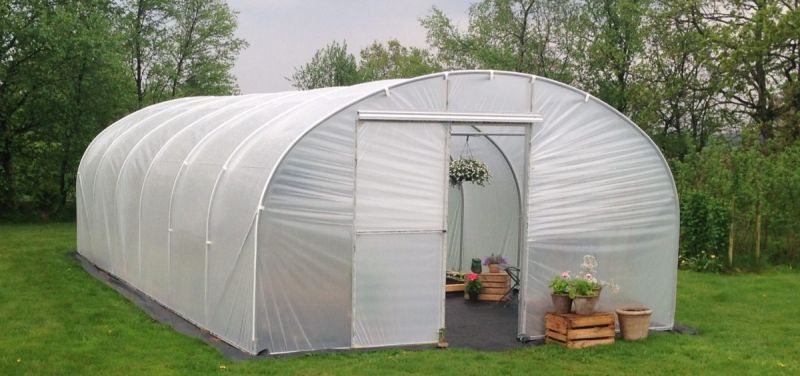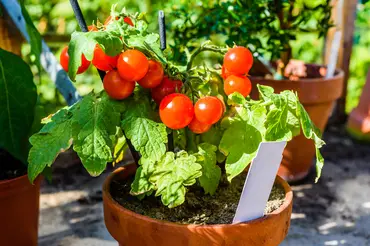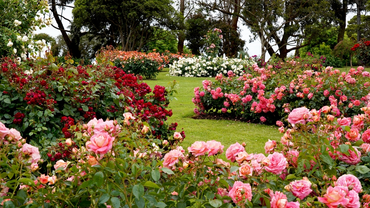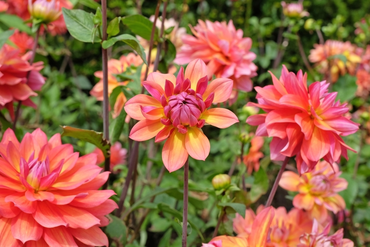At Carpenter’s we have a number of Polytunnels that we use for growing and storing plants. We’re currently replacing two old Polytunnels and we thought it would be a good opportunity to tell you a little bit about how and why polytunnels are so useful for commercial growers, as well as hobby gardeners. So, in this blog post, we’re going to look at the advantages of using polytunnels to grow vegetables and bedding plants. 
What is a Polytunnel?
A polytunnel is a long plastic-covered tunnel. Larger ones look like an elongated greenhouse, but there are smaller polytunnels available that are bigger versions of garden cloches. Whereas greenhouses are made from glass, polytunnels are made from plastic and are, therefore, cheaper to erect and maintain. They can also be moved relatively easily if necessary, as unlike a large greenhouse, a polytunnel is not a permanent structure.
At Carpenter’s we use polytunnels to grow bedding plants and vegetables for our farm shop. They offer some great advantages, which we will explore below.
Protection from the Weather
Like a greenhouse, a polytunnel protects crops from the weather. It can shield delicate plants from strong winds, frost, strong sunshine, and heavy rain. Commercial growers can’t afford to lose an entire crop because of bad weather, so polytunnels are an effective method of insurance. They are especially useful for young, less well-established bedding plants, as well as salad vegetables and herbs.
Control Growing Conditions
Polytunnels allow us to control the temperature, which is vital for optimum growing conditions. Planting in a polytunnel lets gardeners and commercial growers enjoy an extended growing season, as things like humidity, ventilation, and irrigation can be more easily controlled.
The Best Location for Polytunnels
If you decide to try using a polytunnel in your garden at home, carefully consider where best to put it. We site our polytunnels in areas that are protected from high winds as the polythene covers can be torn when they are nearing the end of their life. You also want to ensure that it will receive plenty of light. If the tunnel is shadowed by trees or buildings crops can be slow to grow and can grow ‘leggy’ in such for light. This means putting them north to south as opposed to east and west. Access to a water supply is handy too, or you’ll have problems irrigating your crops.
Crops grown inside a polytunnel can be planted directly into the soil with a walkway down the middle of the tunnel. You can also use raised planters. Some growers prefer this, as it’s less backbreaking working on a raised bed compared to on the ground. In addition, it’s easier to control the soil conditions in a raised bed and prevent weeds.
Rotate Crops
We rotate the crops we grow in our polytunnels, so we have crops to harvest all year round. If you are using a polytunnel at home, it’s a good idea to adjust your sowing dates, so you always have something ready to harvest. For example, you could plant some early vegetables, followed by spring bedding plants, herbs and salads, and summer veggies before switching to winter veggies.
Don’t forget to keep an eye on pests! No matter how well you manage your crops of veggies or flowers, pests are a risk. We minimise the pest problem in our polytunnels by making sure they are well ventilated and meshed and the temperature is kept at the right level. Too much humidity tends to encourage pests to flourish and fungus type diseases. Too much heat can scorch and damage crops and their fruit.




